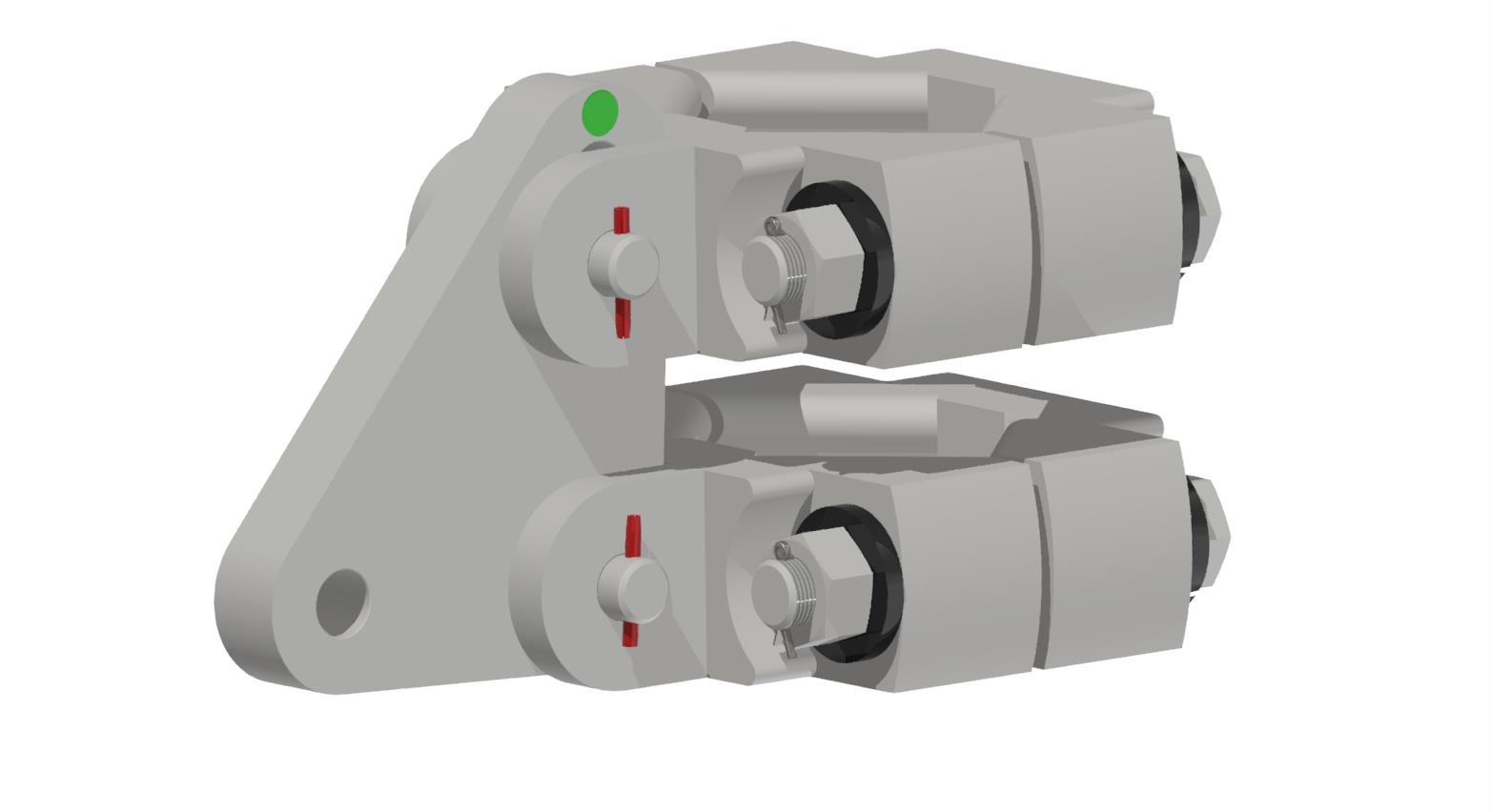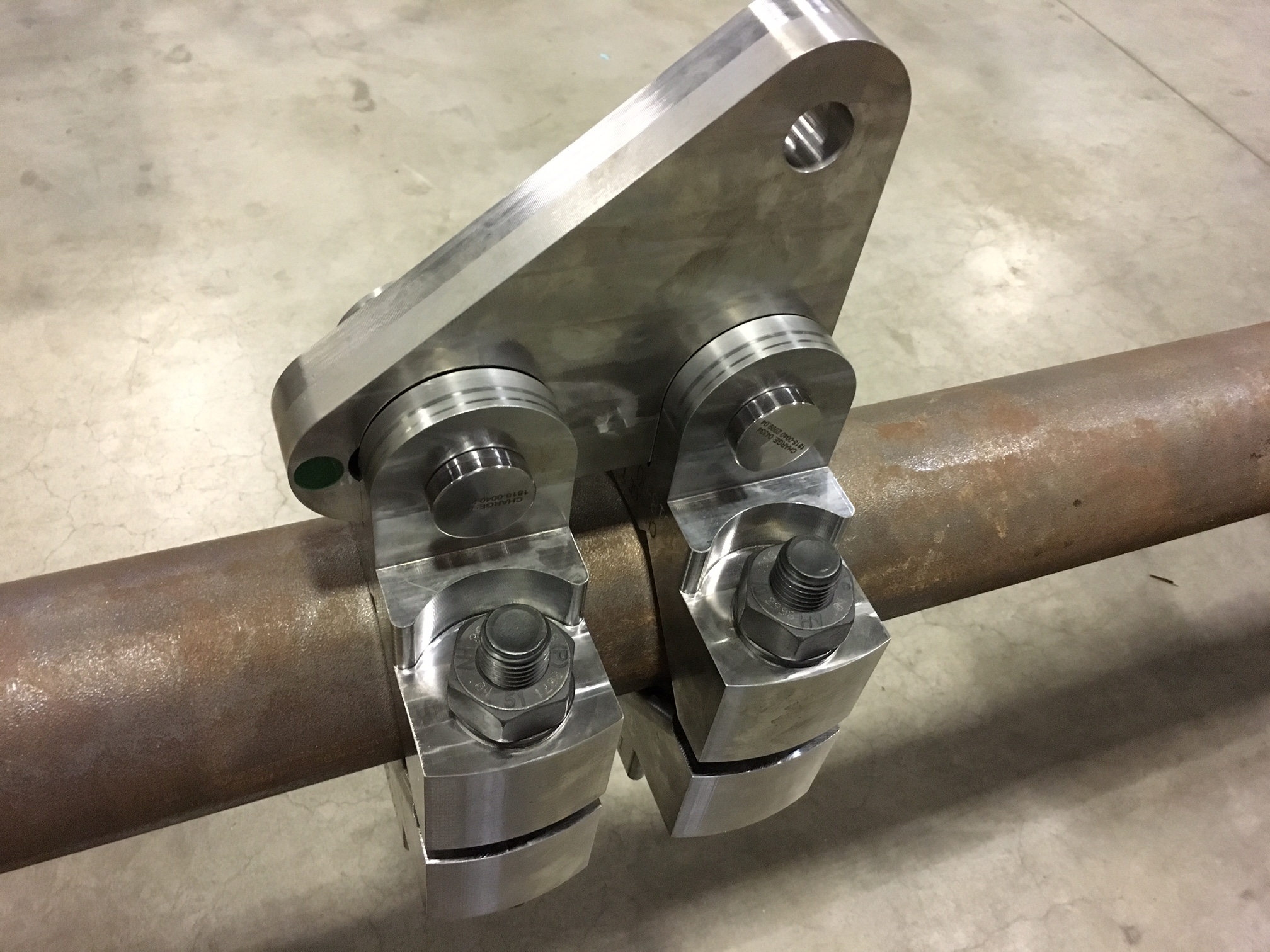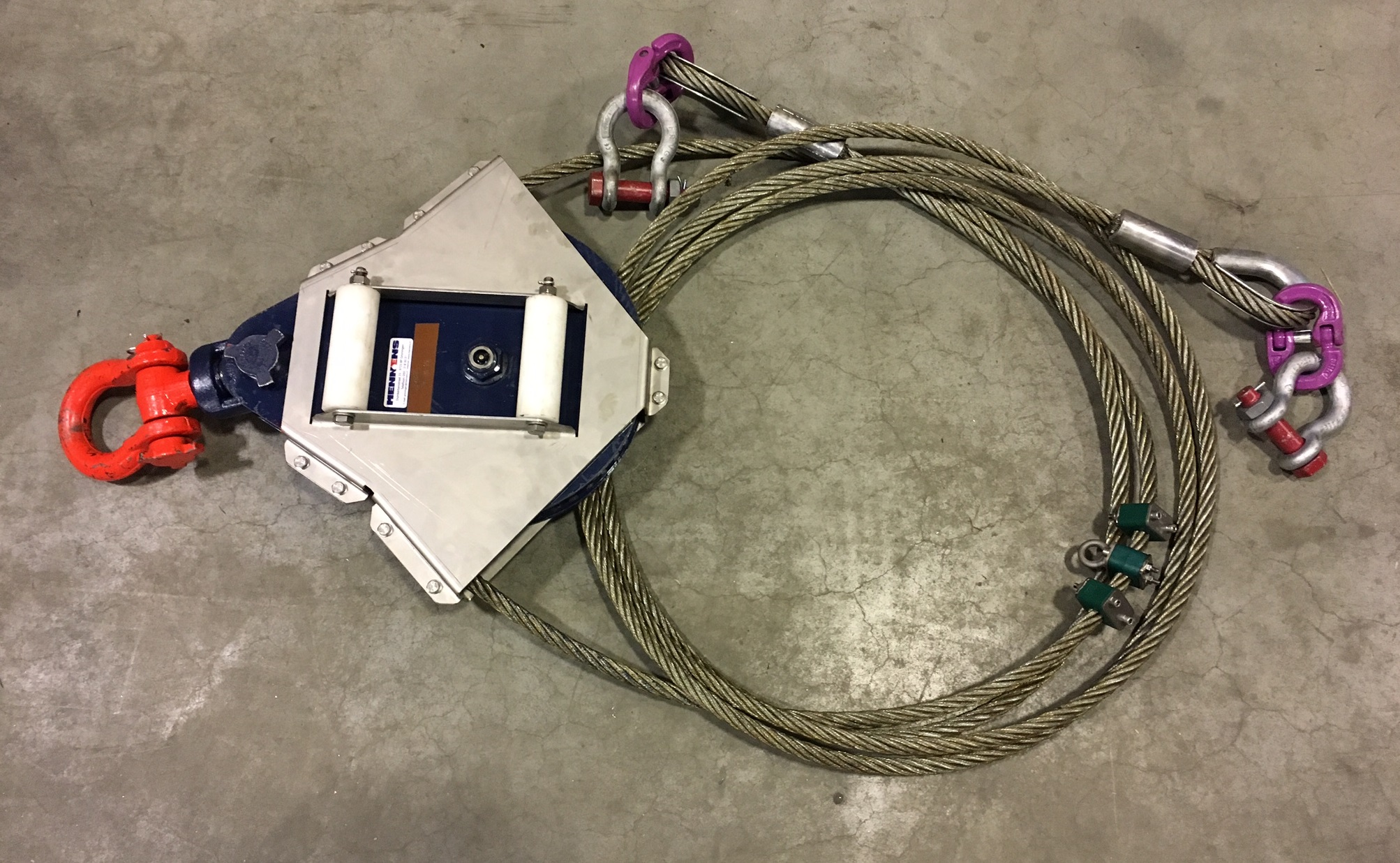GECKO - Bail Clamp
GECKO, the Elevator Link / Bail Clamp
(Patent Pending)

Creating a 2,5 metric ton Suspension point at an Elevator Link / Bail.
The GECKO-C01 shown fitted on a 500 Ton Elevator Link / Bail.
TECHNICAL DATA:
The Backpacker Bail Clamp is designed to be used in conjunction with the Backpacker Single Joint Compensator System.
One of the two Extended Stroke Cylinder Assembly models, 1,5 metric Ton or 2,5 metric Ton, is suspended from the GECKO Clamp. A sling runs from this Cylinder over a Sheave below the main Elevator up to the second GECKO clamp situated on the opposite Elevator Link / Bail. This way the well center between the bails is free to accommodate a fill-up and circulation tool or a cross-over sub to be able to rapidly connect the top-drive to the tubing or casing in case of a kick.
Because the sling runs over a sheave the load handling capabilities of the single joint elevator, lowered and lifted by the backpacker Single Joint Compensator System is 3 metric Ton with the 1,5 Ton extended cylinder assembly, or 5 metric Ton with the 2,5 metric Ton extended cylinder assembly.
The GECKO-C01 clamp is designed for use on a standard 500 short ton (Size 3.1/2") Elevator Link / Bail with a main shaft diameter between Ø114mm. and Ø121mm. (The nominal shaft size is 4.1/2"/ Ø114mm. however, actual measurements showed they are bigger.).
|
Type |
Maximum Load |
Bail Type |
|||
|
Gecko C01 |
2,5 Metric tonnes |
2,76 short Tons |
25 kN |
5510 lbs. |
3 ½ - 500 tons Min Ø114mm. Max Ø121mm. |
RIG-UP USING THE BAIL CLAMPS:

Special designed Sheave:
The GECKO clamp was designed and built according to EN-ISO 13535:2001 - Petroleum and Natural Gas Industries Drilling and Production Equipment - Hoisting Equipment.
This European standard is considered equal to API 8C.
Product verification, from design through strength / stress analysis all the way up to the break load test, was carried out by Lloyd's Register.
Our effort were rewarded with the certificate below.

For other possible applications Backpacker first need to be consulted because force or loading can occur which the product is not designed to accommodate!





